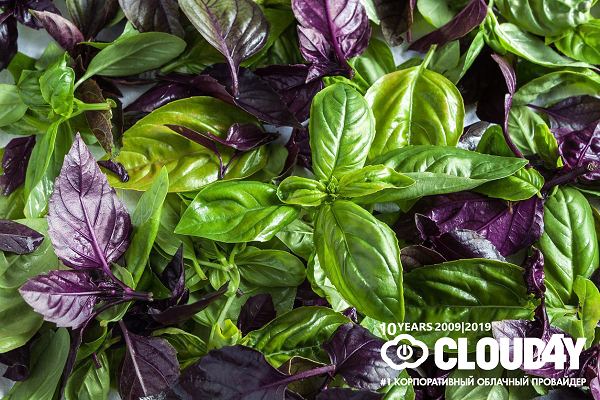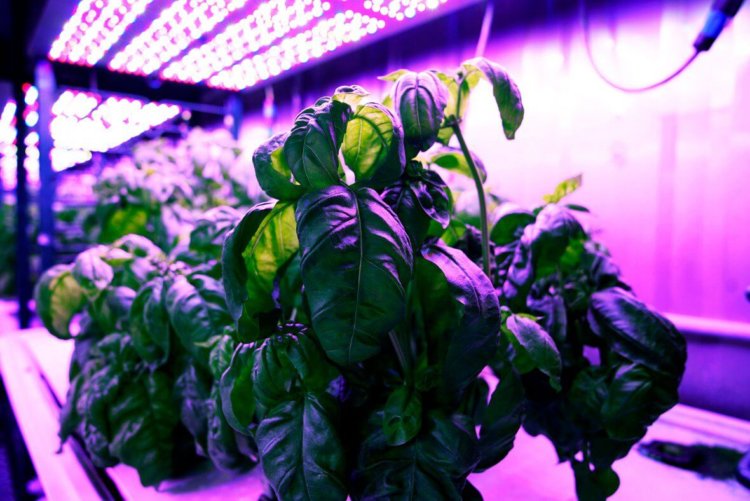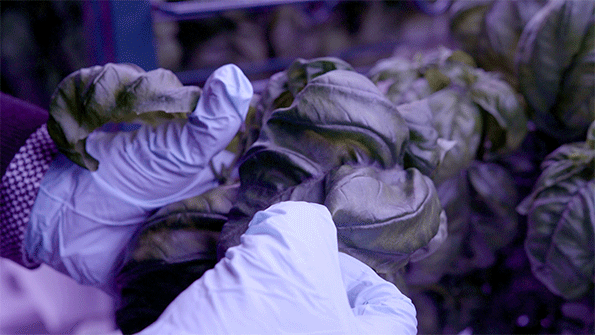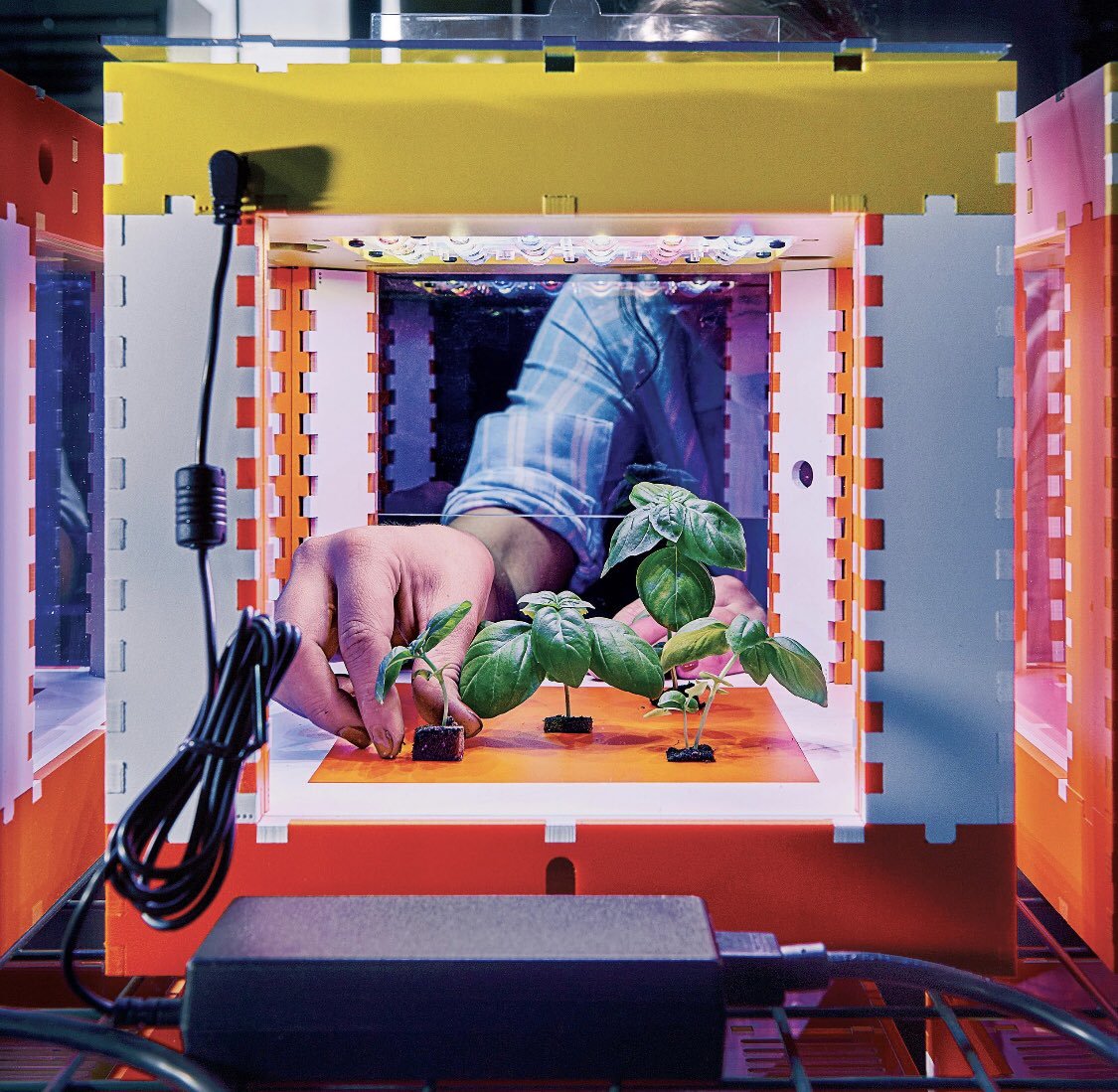The computer will make you tasty

This is basil. You are probably familiar with this plant, which has a very unusual taste and smell. Or even tried it as part of salads or dishes with pesto. But scientists at the Massachusetts Institute of Technology's Anti-Disciplinary Research Laboratory (MIT Media Lab) claim that they were able to grow basil bushes that will be tastier and more aromatic than all that you have seen before.
No genetic experiments were carried out. Scientists used computer algorithms to simulate and recreate the most comfortable conditions for growing basil. That is, the results were achieved through a combination of botany, machine algorithms and the good old chemistry. An excellent alternative to genetic modification of crops is methods that not everyone likes.
How it was

OpenAg employees grew basil on hydroponic farms in specially equipped shipping containers in Middleton, Massachusetts. Temperature, light, humidity and other environmental factors inside the containers are controlled by automation. Therefore, hydroponic containers inside the laboratory are simply called “food computers”.
These settings allowed them to change the duration of lighting and the duration of exposure to ultraviolet radiation. Once the plants were grown, the researchers evaluated the taste of basil by measuring the concentration of volatile compounds found in the leaves using traditional analytical chemistry methods: gas chromatography and mass spectrometry.
All information from the experiments at the plant was then introduced into machine learning algorithms developed by the MIT and Cognizant teams (formerly Sentient Technologies). The algorithms evaluated millions of possible combinations of light duration and ultraviolet and generated sets of conditions that would maximize taste, including a 24-hour daylight regimen. The study showed that the effect of light on plants for 24 hours a day provides the best taste and aromatic qualities of basil.
Do not think, it all ends with proving the benefits of the 24-hour lighting regimen for the taste and aroma of basil. Scientists are studying the effect on plants of changes in other environmental factors - temperature, humidity and color of light, as well as the effects of adding plant hormones or nutrients. For example, in one experiment, plants are exposed to chitosan, a polymer found in insect shells that causes a plant to produce various chemical compounds that prevent insect attacks.

Scientists are also working to create basil plants with a higher content of compounds that can help in the fight against diabetes and other complex diseases. Basil and other plants are known to contain valuable nutrients and antioxidants, as well as compounds that help control blood sugar. And in one of his scientific works, the head of the OpenAg research group, John de la Parra, showed that these compounds can be stimulated by changing environmental conditions. So the work on improving the taste is quite capable of leading to the creation of a product that is more healthy.
Researchers are also interested in using their approach to increase the yield of medicinal plants. Of particular interest is the periwinkle of Madagascar, which is the only source of anticancer compounds of vincristine and vinblastine.
Modern ideas in digital agriculture are used to systematically change the chemical composition of the plants we eat by changing the environmental conditions in which the plants are grown. This shows that we can use machine learning and well-controlled conditions to find “sweet spots,” that is, the conditions under which a plan maximizes the taste, yield and usefulness of plants.
The idea of using machine learning to optimize crop yields and plant properties is rapidly gaining momentum in agriculture. And we already wrote about some agricultural technologies , which are based on artificial intelligence. But the main obstacle to the development of all these technologies is, oddly enough, the weak information interaction. Lack of publicly available data, data collection standards for data exchange - all this impedes the development of science.
However, smart greenhouse technology is already being used in some commercial farms, says Naveen Single, who leads a group of crop scientists at Bayer, a German corporation that acquired the biotechnology company Monsanto last year. “Taste is one area where we make heavy use of machine learning,” he says. And he adds that machine learning is a powerful tool for growing in greenhouses, but less useful for open fields. In the "field conditions", scientists are still looking for ways to improve the quality and quantity of the crop.
Climate adaptation

Researchers say that another important area of development for cyber agriculture is climate change adaptation. Although it usually takes years or even decades to study how different conditions will affect crops, many controlled experiments can be carried out in a controlled environment in a short period of time.
“When you grow things in the field, you have to rely on the weather and other factors to work together, and you have to wait for the next growing season. With systems like ours, you can get more data in a short period of time,” says de la Parra
The OpenAg team is currently conducting one of these hazelnut research for Ferrero candy manufacturer, which consumes about 25% of the world's hazelnut production.
As part of their educational mission, researchers also developed small-sized “food computers” - boxes that can be used to grow plants in a controlled environment, while sending data to the MIT team ( video ). Such devices are used by many high school and high school students in the United States, and activists from 65 countries have also received them. They share their ideas and results on a specialized forum.

“For us, each box is a source of data that we really want to study, but it is also a platform for experiments, a new tool for teaching biological sciences, programming, chemistry and mathematics,” said Harper, chief research officer of MIT Media Lab and director of OpenAg .
Is there anything other than greens and nuts?
There is. Cloud4Y already talked about beer. And IBM, for example, presented Vkusobot - AI, which loaded the knowledge of world experts in the field of food, chefs and tasters. The goal of scientists is to create artificial intelligence that can improve seasonings, and then - develop new tastes.
Vkusobot generates combinations that people have not thought of. We are biased, we have favorite habits, tastes, aromas. AI does not have these prejudices, therefore it is ready for experiments. How does this happen?
Flavor:
- determine which ingredients are used together;
- will find interchangeable interchangeable;
- indicate the desired form of the specific ingredient in the product (powder, essence, cereal).
If we distract from food, we can mention the pharmaceutical startup Insilico Medicine and the artificial intelligence GENTRL created by him, which in 21 days found six new compounds to combat fibrosis and other diseases. However, this is still at the level of theory - the treatment methods found must still undergo comprehensive testing.
What else is useful to read on the Cloud4Y blog
→ AI helps study animals in Africa
→ Summer is almost over. Almost no data leaked
→ vGPU - use cannot be ignored
→ 4 ways to save on backups in the cloud
→ 5 Best Kubernetes Distributions
Subscribe to our Telegram channel so as not to miss another article! We write no more than twice a week and only on business.
All Articles